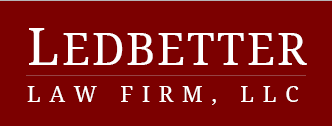“Cram-down” in Chapter 13 bankruptcy refers to Chapter 13 bankruptcy clients being able to pay back less than the balance owed on a vehicle (or other personal property). The amount of the loan which is greater than the fair market value of the vehicle (or other personal property) at the time the case is filed is classified as non-priority, unsecured debt and often therefore does not need to be repaid in the Chapter 13 bankruptcy.
If No Guarantee is Required to Unsecured Creditors
In many cases Chapter 13 bankruptcy clients are not required to repay any funds owed for unsecured, non-priority debts, such as most credit card debts, medical bills, deficiencies on foreclosed mortgages, deficiencies on loans owed on repossessed vehicles, income taxes for which income returns were timely filed and which are more than three years old. If no repayment is required to unsecured, non-priority creditors and the cram-down applies, the Chapter 13 bankruptcy client will generally be able to pay off the car loan principal by paying the vehicle fair market value with interest in accordance with the applicable interest rate set by the local court and have the loan balance amount in excess of the fair market value discharged without repayment upon completion of the Chapter 13 bankruptcy case.
910 Day Rule for Purchase Money Vehicle Loans
In order to apply the cram-down and only pay back the amount equal to the fair market value plus the applicable interest rate, the vehicle must have been purchased at least 910 days (just under two and a half years) prior to the filing of the bankruptcy case.
1 Year Rule for Non-Purchase Money Vehicle Loans
If a loan owed against a vehicle was taken out after the vehicle was purchased such as a refinancing of the original loan or a loan taken out after the vehicle was owned “free and clear,” only one year must have passed after the loan was taken out and the filing of the Chapter 13 bankruptcy case for the cram-down to apply.
1 Year Rule for Non-vehicle Personal Property Loans
For a loan in which personal property other than a vehicle is the collateral such as a loan against electronics equipment, furniture, or jewelry, only one year must have passed after the loan was incurred even if the loan was the used to originally finance the purchase of the item(s) in order for the cram-down to apply.
